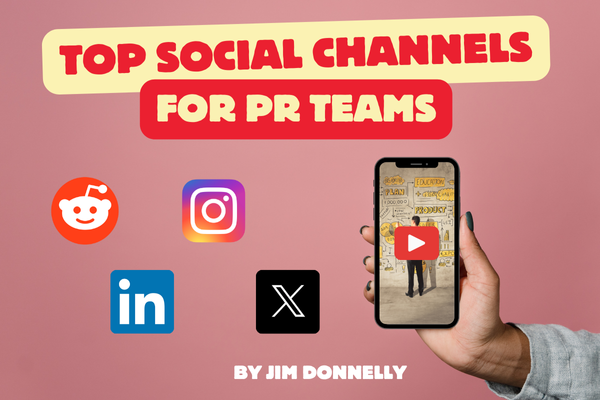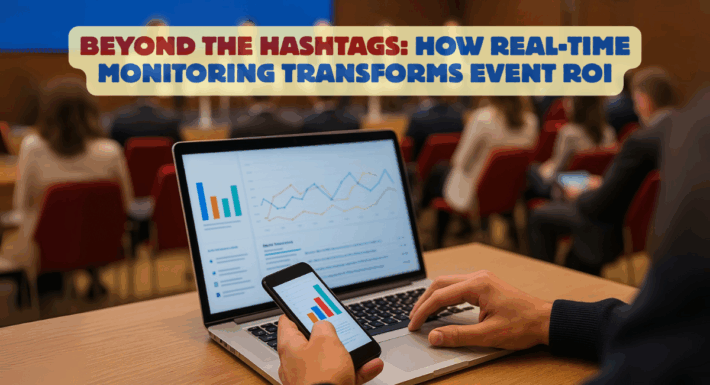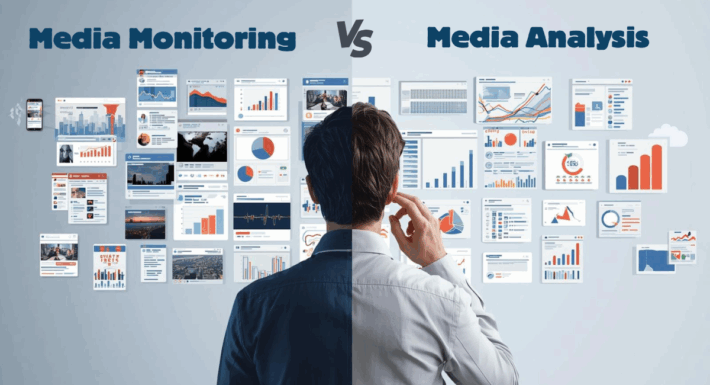The Top Social Networks for PR Teams (and How PR Should Leverage Them)

PR isn’t just about engaging journalists anymore—not by a long shot. These days, most PR teams work with their marketing counterparts to engage with their communities and monitor effectiveness on multiple social media platforms.
So which are the most popular social networks for PR teams that we see every day as a media monitoring and analysis company, and how should those in public relations leverage them? We break it all down for you below.
Which Social Networks Are Most Popular?
If you had to guess, which social media platform would you say is the most popular in the U.S.?
The answer: YouTube. And while some may see it more as a video hosting site than a social network, it’s still head and shoulders more popular than Facebook, Instagram, or any other social platform.

Data from Pew Research shows that YouTube is the most popular platform among all age groups. Otherwise, just which social platform is the most desirable largely depends on age: Most older U.S. adults prefer Facebook and younger consumers would rather log on to Instagram.
| Ages 18-29 | 30-49 | 50-64 | 65+ | |
|---|---|---|---|---|
| 67 | 75 | 69 | 58 | |
| 78 | 59 | 35 | 15 | |
| Snapchat | 65 | 30 | 13 | 1 |
| TikTok | 62 | 39 | 24 | 10 |
| 44 | 31 | 11 | 3 |
This is all valuable intel for PR practitioners who can no longer rely on making a couple of calls to journalists to get their company’s message out to the masses. PR pros now need to go where their audiences live online to make an impact.
Here’s how PR teams can leverage specific social platforms to their advantage.
How PR Can Leverage Social Media Platforms
At Fullintel, we work with hundreds of large clients who monitor traditional and social media for brand mentions, to measure engagement, and keep up with conversations in their industry. Here are our top 5 observations and pieces of analysis-fueled advice to inform PR teams responsible for their organization’s social media presence.
1. The most monitored social platforms by PR
Even though Fullintel can monitor any social media platform on Earth—and despite YouTube’s cross-generational popularity—the PR practitioners we work with typically zero on Instagram, X, and LinkedIn the most for media monitoring.
But a brand’s preferred platform also depends largely on the industry: Retail and fashion brands, for example, typically request TikTok and Instagram above all else.
2. Video is king (but don’t forget about UGC)
The ongoing shift from a focus on images to video is largely complete, with most brands moving much of their social production budgets to both long- and short-form videos in 2024. It helps that most mainstream social platforms have developed relatively similar video capabilities.
But maybe the best part is that PR teams don’t need much if any video creation expertise to start making great videos about their brand. You can leverage user-generated content (UGC) for that—either by approaching creators who are passionate about your brand directly or finding them through a creator marketplace. Brands can encourage creators to make positive videos about their products or services by gifting products or even paying creators.
Note that UGC creators are generally known for making authentic, unpaid content they are passionate about. That’s different from professional influencers, who can be wrangled via an influencer agency and are typically always paid for their endorsements.
3. Use Reddit for engagement and research
Reddit is becoming a popular platform for PR teams. Divided into highly specialized Subreddits populated by highly passionate (and often very knowledgeable) users, Reddit is an excellent channel for surfacing specialized knowledge and trends from specific communities and verticals.
Redditors, as users are known, are one of the most engaged social media communities out there, which can be a great thing for PR teams to leverage (but it can also be risky if you approach Reddit without a solid strategy in place).
Reddit’s advantage over spaces like X, or Instagram, is its pool of unpaid, community driven administrators. Admins can promote, demote, ban, and delete users and content that fly past the “subreddit” guidelines.
This editorial control makes the variety of spaces in Reddit somewhat more humane than its unfettered competitors. Further, Reddit’s ability to generate communities that sustain themselves, and grow such as municipal subreddit r/Ottawa as an example, or as written about previously related to interest groups like r/LoblawsIsOutOfControl.
4. Facebook and X are declining in influence, but still valuable
The site formerly known as Twitter has lost much of its sense of community and its user growth has flatlined over the past year, but it’s still a place where important conversations happen—which is why it’s almost always monitored by PR teams who track social.
At the same time, X has seen a dramatic, and seemingly intentional increase in objectionable content, SimilawWeb reports that 20% of the outbound links sent from X to other sites are going to “Adult Content”, 20% of the time when someone clicks on a link on X, it goes to porn.
And while Facebook’s demographics (which trend older) aren’t as in demand as some other platforms (like the ones in the next subsection), its communities and pages are still very powerful for many organizations—especially those in the healthcare vertical.
5. Instagram and TikTok are on the rise
TikTok has enjoyed a meteoric rise over the past several years and is now one of the most influential platforms among younger users—to the point where it often influences changes on other platforms, as well (like when Instagram introduced its Reels feature in response to TikTok’s popularity).
The good news is that brands hoping to get in on the action on TikTok and Instagram can usually leverage both platforms with the same or similar content, which helps build economies of scale when conducting social campaigns or engaging creators.
6. Monitor Social and Traditional Media with Fullintel
Fullintel’s media monitoring specialists combined with our Fullintel Hub media monitoring platform can help you track trends, influencers, creators, key opinion leaders, and anything else you care to name on social media. Dashboard-style Influencer and Key Opinion Leader Reports curated by expert teams help keep your insights sharp while staying on top of the people and trends that matter in your industry.
In today’s fast-paced digital world, it’s not enough for PR teams to simply understand social media platforms—they need to master them. Platforms like TikTok, Instagram, and LinkedIn each offer unique opportunities to connect with audiences, but success comes from knowing how to use these tools effectively. That’s why staying up to date with industry best practices and investing in professional growth is just as important as choosing the right platforms. By blending expertise with thoughtful strategies, PR teams can build stronger connections, foster engagement, and deliver real results in a constantly changing online landscape.



